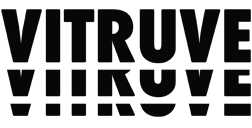13 de August de 2025
Velocity Based Training Velocity Based Training
Leandro Carbone: Velocity-Based Training and High-Performance Strength & Conditioning
In elite sports, strength & conditioning has evolved into an approach where science, technology, and practical experience combine to maximize performance and reduce injury risk.
One of the key figures driving this transformation is Leandro Carbone, a Strength & Conditioning Coach with over 15 years of international experience and a specialist in Velocity-Based Training (VBT).
Who is Leandro Carbone
With a degree in Physical Activity and Sports Science, a Master’s in Strength & Conditioning, and specializations in exercise physiology, sports science, and human performance, Carbone has worked with national football teams, rugby clubs, and combat sports athletes such as boxers and MMA fighters.
He has lived and worked in three countries on three different continents, adapting to various competitive contexts, resources, and cultural realities. Today, he leads two companies, including Comunidad LIFT, an educational platform connecting coaches and performance professionals worldwide.
“My focus has always been to translate scientific evidence and data into concrete actions that improve performance and reduce injury risk.”
Evolution of His Training Philosophy
Carbone started with rigid methodologies based on traditional periodization. Over time, he realized adaptation is more valuable than rigidity.
His current philosophy rests on three pillars:
- Applied science: using evidence and technology as tools for decision-making.
- Operational simplicity: creating clear, sustainable systems that are easy to implement.
- Strategic flexibility: adjusting objectives and methods to the real-world context.
Discovering Velocity-Based Training
Carbone discovered VBT in 2010 through research showing how execution speed could optimize strength prescription and monitoring. In 2011, he bought his first linear encoder, allowing him to measure strength and power in real time, adjust loads, and provide instant athlete feedback.
How Carbone Integrates VBT
- Power blocks: keeps velocity loss under 10% per set, using the Prilepin chart to guide volume.
- Development phases: uses VBT to teach athletes movement intent and execution quality.
- Real-time adjustments: adapts loads to daily performance.

Benefits of Velocity-Based Training
According to Carbone, VBT offers three main benefits:
- Athlete education: enhances self-regulation and awareness of movement intent.
- Immediate feedback: boosts motivation and focus.
- Precise load control: more sensitive than %1RM for daily performance changes.
Challenges in Implementing VBT
- In teams: device availability and logistics during the early stages.
- With colleagues: overcoming resistance to technology adoption due to misconceptions or lack of data interpretation training.
Advice for Coaches and Athletes Starting with VBT
“Start simple and focus on consistency before sophistication.”
The key is not to measure everything from day one, but to understand velocity logic, get used to the feedback, and build solid habits before increasing complexity.
Conclusion
Leandro Carbone’s work shows that modern strength & conditioning combines science, simplicity, and adaptability. When applied correctly, Velocity-Based Training can transform the way coaches and athletes approach strength and power.
